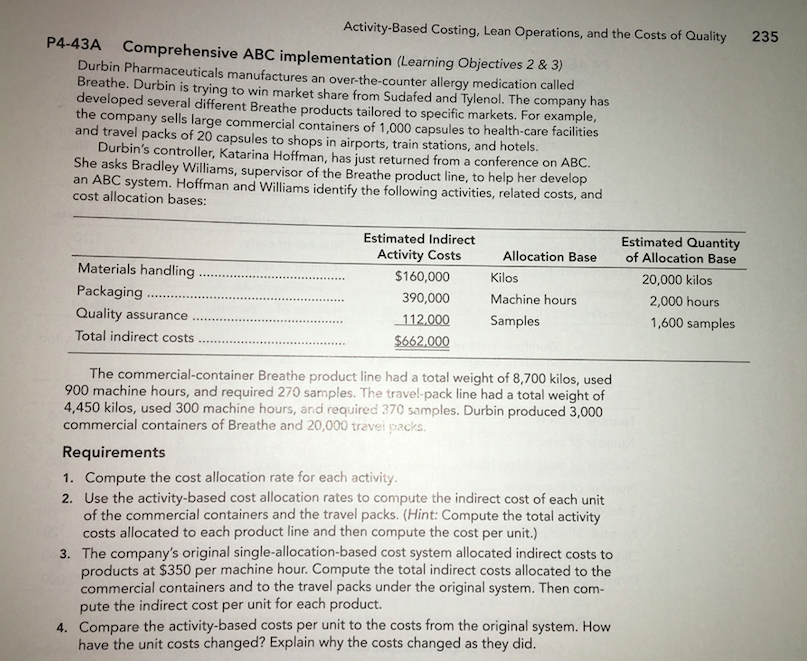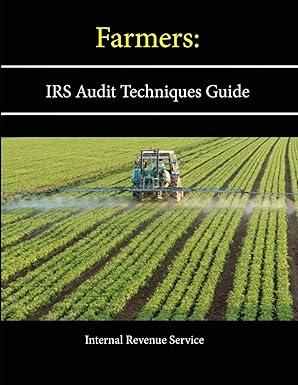
Activity-Based Costing, Lean Operations, and the Costs of Quality 235 P4-43A Comprehensive ABC implementation (Learning Objectives 2 & 3) Durbin Pharmaceuticals manufactures an over-the-counter allergy medication called Breathe. Durbin is trying to win market share from Sudafed and Tylenol. The company has developed several different Breathe products tailored to specific markets. For example, the company sells large commercial containers of 1,000 capsules to health-care facilities and travel packs of 20 capsules to shops in airports, train stations, and hotels. Durbin's controller, Katarina Hoffman, has just returned from a conference on ABC. She asks Bradley Williams, supervisor of the Breathe product line, to help her develop an ABC system. Hoffman and Williams identify the following activities, related costs, and cost allocation bases: Estimated Indirect Activity Costs $160,000 390,000 Allocation Base Kilos Machine hours Estimated Quantity of Allocation Base 20,000 kilos Materials handling Packaging . Quality assurance.. Total indirect costs 2,000 hours 1,600 samples 112.000 Samples $662,000 The commercial-container Breathe product line had a total weight of 8,700 kilos, used 900 machine hours, and required 270 samples. The trave!-pack line had a total weight of 4,450 kilos, used 300 machine hours, and required 370 samples. Durbin produced 3,000 commercial containers of Breathe and 20,000 travei packs. Requirements 1. Compute the cost allocation rate for each activity 2. Use the activity-based cost allocation rates to compute the indirect cost of each unit of the commercial containers and the travel packs. (Hint: Compute the total activit costs allocated to each product line and then compute the cost per unit.) 3. The company's original single-allocation-based cost system allocated indirect costs to products at $350 per machine hour. Compute the total indirect costs allocated to the commercial containers and to the travel packs under the original system. Then com- pute the indirect cost per unit for each product. 4. Compare the activity-based costs per unit to the costs from the original system. How have the unit costs changed? Explain why the costs changed as they did







